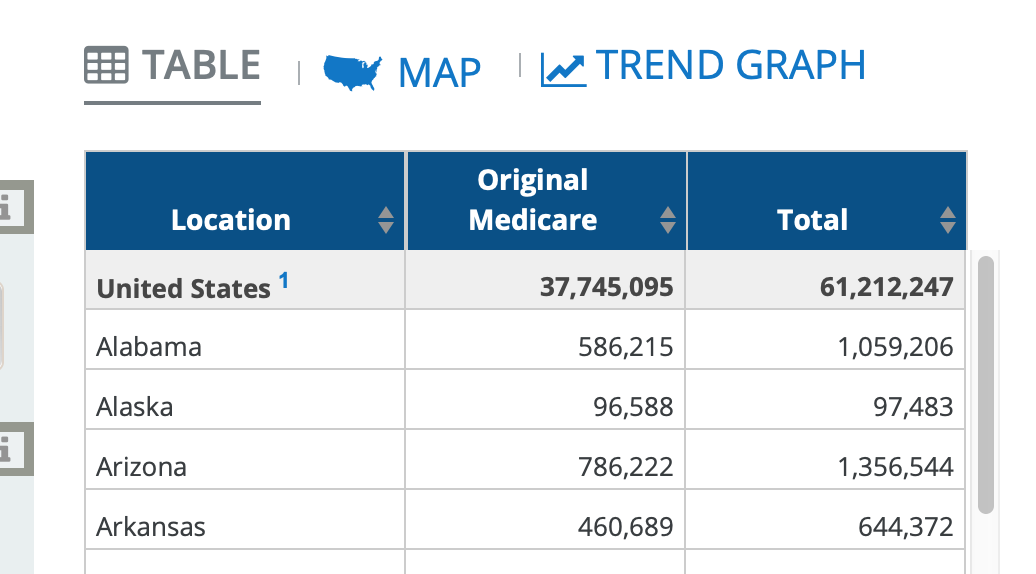A family member asked me a fascinating question recently: How many Americans are covered by Medicare? She is, and she’s curious about all the news reports that Democrats want to make more people eligible for the government insurance intended for those 65 and over.
Here’s what the Kaiser Family Foundation shows for 2020: 61, 242, 247 people covered by either traditional Medicare or Medicare Advantage. In North Carolina, the number is 2,021, 551.

The trend graph shows enrollment is growing by about 1.5 million per year. The questions are clear as our population ages: Is this sustainable, particularly when Leftists are pushing for lowering the eligibility age to 60?
Sally Pipes of the Pacific Research Institute reminds us it’s not.
Medicare is funded by payroll taxes. And the share of the population that is working is declining.
The number of Medicare beneficiaries, meanwhile, is surging. Between 2010 and 2019, enrollment grew by 29%, or more than 13 million. Today there are three workers per beneficiary. Within 10 years, there will be 2.5 workers per Medicare enrollee.
Many retirees believe they “paid into” Medicare throughout their working lives and so expect the program to be there for them in their golden years. But Medicare’s trust fund is running out of money. The Congressional Budget Office now projects that the program’s Part A hospital insurance fund will be exhausted in three years.
It will take big cuts in services or big tax hikes to get that trust fund back on sound financial footing. The Medicare Payment Advisory Commission recently concluded that keeping Part A solvent for the next 25 years would require a 17% cut in the program’s hospital spending. That amounts to roughly $1,000 in cuts per beneficiary per year.
Yet, the gigantic $3.5 trillion social welfare bill that’s now on the table would only make the fiscal problem worse by, at the very least, expanding current benefits, and at the worst, expanding eligibility as well. CNBC describes the package:
As part of the budget blueprint, Medicare — relied on by most Americans once they reach the eligibility age of 65 — would cover dental, vision and hearing. Additionally, the age when people can sign up for the insurance would also be lowered, although it’s uncertain whether it would be age 60 as President Joe Biden has said he supports.
To have a rational debate about all of this, we need the very latest coverage and solvency numbers, which is required each year by April. Yet this year, we’ve gotten zip, zero, nada from the Biden administration, as Mark Warshawsky of the American Enterprise Institute details in this piece.
One has to speculate that the true reason for the tardiness of this year’s trustees’ reports is not the incompetence of the Biden administration. More likely, the motivation is political. If the new reports show a further deterioration in the financial condition of Social Security and Medicare, the nation’s existing social insurance programs, what does that say about the prudence of enacting a $3.5 trillion addition to the public burden for major new social welfare programs? The public needs to know. Secretary Yellen, please issue the 2021 reports now; the Working Group should already be working on the 2022 report.
When I shared the Medicare story with my family member, she expressed gratitude for being covered, and at the prospect of more benefits. And then, as the reality of the checkbook set in, she asked this: “Are my grandkids going to have to pay for all of this?”
Bingo.


